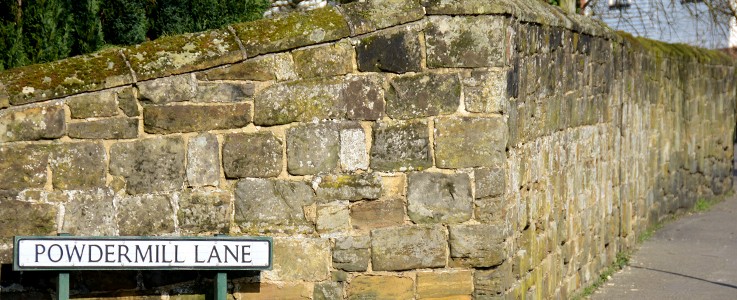
Postcode: TN33 0SP
Song: Sovereign Light Café
Lyrics: I’m going back to a time when I owned this town / Down Powdermill Lane & the Battlegrounds
Powdermill Lane is one of the roads linking Battle and Bexhill, leading out of Battle with the battlegrounds on your right.
The Gunpowder Capital
The conspiracy and criminal tactics connected to Guy Fawkes’ gunpowder plot were not as far removed from peaceful Battle as you may think.
During the 17th century a roaring gunpowder trade operated from Battle, with the largest works being on the site of what today is the 18th Century Powdermills Country House Hotel. It was these seemingly inconspicuous works that reportedly supplied Guy Fawkes prior to his plot to blow up the Houses of Parliament on 5 November 1605. Although the famous terror plot failed, word got around that the Battle works was involved and for a short while it brought a certain notoriety to the local industry.
Gunpowder production in Battle continued through the 17th and 18th centuries, until a number of mishaps derailed the industry in Battle. In 1847, the Duke of Cleveland refused to renew the gunpowder licence, following a number of near misses with over-cooked gunpowder. A large explosion occurred in 1798 when 15 tonnes of gunpowder exploded after being left in the oven too long. As the gunpowder trade came to a premature end, the works on Powdermills Lane became the grand hotel we see today and Battle moved on to a more honest way of making a living.
Making gunpowder was highly dangerous. One slip could mean instant death or being maimed for life, and the modest protection afforded to workers – leather aprons, clogs with copper caulkers to prevent sparks – did little to prevent frequent accidents and explosions.
Exposed to such risks on a daily basis, gunpowder workers developed a special camaraderie, and a strong sense of community grew up around these remote places of work. The workers’ team spirit carried over into their daily lives, as they played football, cricket and in works’ bands together.
The Battle gunpowder works did not compare in size to others across the country, like the large mills at Waltham Abbey, which was purchased by the crown in the 18th century to protect the quality of supply to the country’s forces. The Battle gunpowder mills continued operating into the early 19th century, but not on the scale of the Waltham Abbey, which played an important role, arming forces for the French Revolution and Napoleonic wars, culminating the Battle of Waterloo in 1815. And as business began to die down in Battle, the works at Waltham Abbey continued to produce gunpowder, which was used during the Crimean and Boer wars.
The fine selection of bonfires and firework displays in 1066 Country every year remember this explosive era, when Battle found itself at the heart of the one the country’s biggest terror plots.